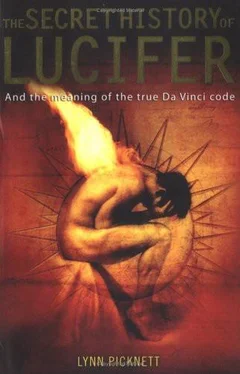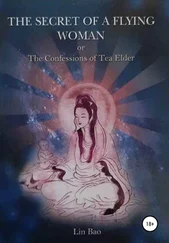Ruler over the afterlife and human and agricultural regeneration, Osiris possessed over 200 divine titles, including `King of Kings', `Lord of Lords', 'the Good Shepherd' (a title shared with his consort Isis), and `the Resurrection and the Life'. The great Egyptologist Sir E. A. Wallis Budge wrote: `From first to last, Osiris was to the Egyptians the god-man who suffered, and died, and rose again, and reigned eternally in heaven. They believed that they would inherit eternal life, just as he had done.'4' According to ancient Egyptian writings: `As truly as Osiris lives, so truly shall his followers live; as truly as Osiris is not dead he shall die no more; as truly as Osiris is not annihilated he shall not be annihilated.'49
Disconcertingly for Christians, the ancient god Osiris' advent was heralded by the sound of an angelic choir and by the Three Wise Men, although they took the form of the stars Mintaka, Anilam, and Alnitak in Orion's Belt, pointing to Christ's equivalent of the Star of Bethlehem. Originally the Israelites acknowledged this as `Ephraim', or the `Star of Jacob', whereas to the Persians it was nothing less than the Messiah - Messaeil. As Barbara Walker notes, Osiris'
flesh was eaten in the form of communion cakes of wheat, the `plant of truth'. Osiris was truth, and those who ate him became truth also, each of them another Osiris, a Son of God, a `Lightgod, a dweller in the Lightgod'. Egyptians came to believe that no god except Osiris could bestow life on mortals 50
Like the rites of Tammuz, the annual Osirian mystery plays required the priestess playing the widowed Isis to lament his murder on the Egyptian Good Friday, setting the scene for the miracle of his resurrection two days later. Bizarrely, Osiris as Un-nefer, `the Good One', was actually canonized as a Christian saint.
In Ezekiel's day, women sat by the northern gate of the Temple weeping for the annual death of Tammuz, the `Christos' (simply `Anointed One'), the sacred king ritually sacrificed each year at Jerusalem. The women first dedicated him to his mother/bride Ishtar-Mari, Queen of Heaven,51 another manifestation of Asherah.
As his female devotees gathered annually at the temple gates they raised ritual howls that the Greeks called houloi, crying `AllGreat Tammuz is dead!' and lamenting:
`For him that has been taken away there is wailing; ah me, my child has been taken away ... my Christ that has been taken away, from the sacred cedar where the Mother bore him. The wailing is for the plants, they grow not ... for the flocks, they produce not; for the ... wedded couples, for ... children, the people of Sumer, they produce not .. '5z
(The concept of the death of the god causing the land to be infertile resurfaces in the quasi-Christian legend of the Fisher King.)
Like all the other `Good Shepherds', `Saviours' and `Fishers of Men', Tammuz was diabolized by the Church, even becoming Hell's ambassador to Spain, where he was still worshipped by certain Moorish sects in medieval times.53 (His name, which means `twin', transmutes into Jesus' disciple Thomas, suggesting a cultic link with the ancient dying-and-rising god - and possibly, an intriguing clue to a secret about Christ's family.)
Tammuz and Osiris were not the only much-honoured ancient deities to be assigned to Hell with the coming of Christianity. John Milton in his epic poem Paradise Lost exults over their demise, declaring:
Old gods confused with incubi/evil spirits Of Baalim and Ashtaroth [sic], those male, Those Feminine. For spirits when they please Can either Sex assume, or both; so soft And uncompounded is their Essence pure 54
Milton lists the names of the fallen gods with some relish, including: `Astoreth, whom the Phoenicians call'd/Astarte, Queen of Heav'n, with crescent horns', together with Adonis and 'Thammuz yearly wounded', and not forgetting `Osiris, Isis, [H]Orus and their Train/With monstrous shapes and sorceries abus'd/Fanatic Egypt and her Priests' S5 Together with the golden calf of Moses' apostate followers and a huge tribe of gods and idols, they are all swept away into the infernal regions with the coming of Jesus Christ.
Et in Arcadia Ego
Astarte's horns, representing the new moon - as they did in the iconography of many other lunar goddesses, including Isis and Diana - were important evidence of devilish influence to the later Christians. However, it was a male deity of the ancient world who was to provide the physical model for the medieval Satan - horns, tail, cloven hooves and all the trappings of Hell. This was the once `all-great Pan', the king of Greek satyrs, the ultimate woodland god - perhaps Arcadian - whose limitless libido, once so admired and envied among his devotees, became a source of terror for Christian women. The Goat-God, sometime mate of various forms of goddess such as Selene, Athene and Penelope - and, apparently, all the ferocious Maenads - his furry thighs, curly hair growing luxuriantly around budding horns and lascivious, almond-shaped eyes, was seen as the epitome of lust. Many of his idols were even impressively, and shamelessly, ithyphallic. No fig leaves obscured Pan's proud masculinity, probably because no fig leaves could possibly cover it.
In his essay on the Tarot card `The Devil', Aleister Crowley notes tellingly `... the card represents Pan Pangenetor, the AllBegetter . . . the masculine energy at its most masculine .156 He describes the function of Pan, even in his less-than-acceptable mode: `All things equally exalt him. He represents the finding of ecstasy in every phenomenon, however naturally repugnant; he transcends all limitations; he is Pan; he is All.'57 Undoubtedly the worship of Pan required a strong stomach and a feverish libido, but as challenger to the staid and small-minded he exemplified a true Luciferan spirit, while never being, as so widely believed, the embodiment of Satan. Horns and hooves alone do not the Devil make.
The Greeks believed the Egyptian solar god Amen-Ra to be another version of Pan - the Masculine Principle being almost universally associated with the Sun, just as its opposite and equal Feminine Principle was usually (but not exclusively) personified by the lunar goddesses - calling his sacred city `Panopolis', city of Pan. Its sacred processions became our modern English panoply, meaning `Any imposing array that covers or protects,'"' such as complete armour worn ceremonially. `Panoply' comes from `Pan' and hoplon, meaning weapon. Pan's own name in turn possibly derived from paein, pasture, and also carried the meaning of `bread' (as in the modern French pain) and `all' (as in `Pan American Airlines'). Other `all-fathers' such as Osiris and Tammuz were symbolized by sacred bread, eaten in order to ingest wisdom. In their sacramental meals, the bread also represented the flesh of the god, and wine symbolized their blood. In an ancient legend concerning the dying-and-ri sing poetic divinity Orpheus, finding only water to drink, he turned it magically into wine.
Like those of his brother gods, Pan's holy drama of death and resurrection was celebrated annually, providing the original Greek tragoidos, or `Goat Song', as he fertilized the land. Pan-inspired sexual revels lasted well into the Christian era, together with elements of worship from the cult of the Maiden, as the May Day festivities where maidens danced around the phallic maypole before coupling - perhaps indiscriminately - with the local lads, much to the Church's impotent disgust.
Cromwell's Puritan Protectorate banned maypoles, along with virtually everything else that made life worth living. To the Puritans, the sexual licence involved in the festivals was bad enough, but in some areas the `Mai', or Maiden who gave her name to the month, was even associated somewhat confusedly with the Popish Virgin Mary! The crude symbolism of the maypole was understood, if not accepted, by Cromwell's co-religionists, such as the writer Philip Stubbes, whose detailed description of the festivities seems a little fevered:
Читать дальше












